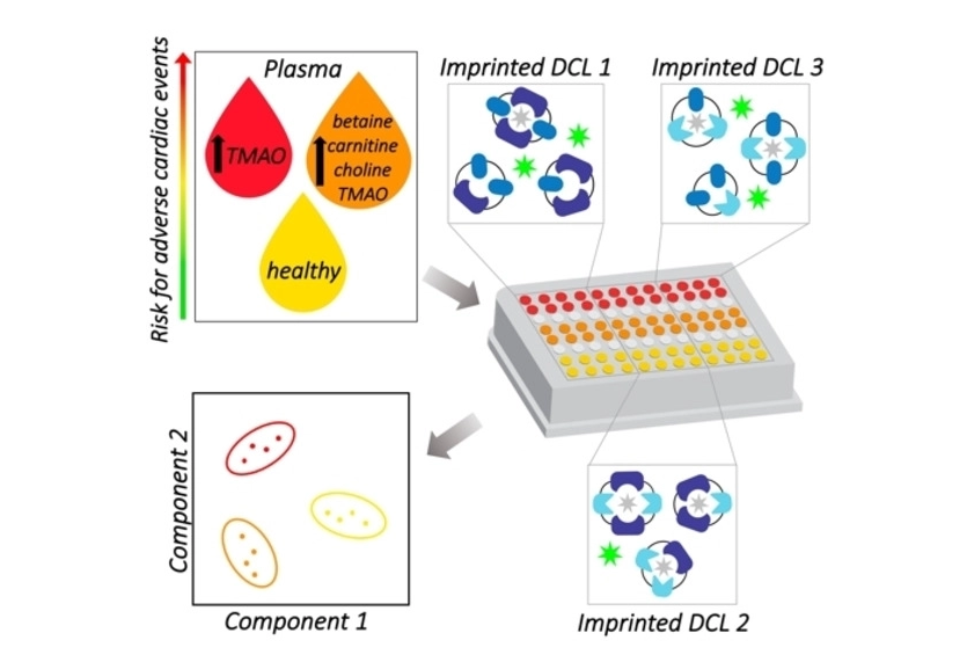Application of an Imprint-and-Report Sensor Array for Detection of the Dietary Metabolite Trimethylamine N-Oxide and Its Precursors in Complex Mixtures
Abstract
Trimethylamine N-oxide (TMAO) is produced in the gut via metabolism of dietary betaine, choline, and carnitine, and elevated TMAO in plasma is associated with adverse health effects, including cardiovascular events. Currently, we lack high throughput methods for sensing these metabolites and detecting high TMAO. Thus, we have adapted our previously described "imprint-and-report" fluorescent sensing method using dynamic combinatorial libraries (DCLs) to create a sensor array for these four metabolites that functions at physiologically relevant concentrations. Templation of DCLs with dye and subsequent addition of analytes generates a fluorescent fingerprint for each metabolite and allows for differentiation via principal component analysis (PCA). Furthermore, we demonstrate that this system can be used to characterize mixtures of the metabolites in both buffer and human plasma samples. Using three to six DCLs, we can distinguish between plasma samples with healthy and elevated levels of TMAO.
Citation
Harrison EE, Waters ML. Application of an Imprint-and-Report Sensor Array for Detection of the Dietary Metabolite Trimethylamine N-Oxide and Its Precursors in Complex Mixtures. Angew Chem Int Ed Engl. 2022 Aug 15;61(33):e202205193. doi: 10.1002/anie.202205193. Epub 2022 Jul 5. PMID: 35710977.


